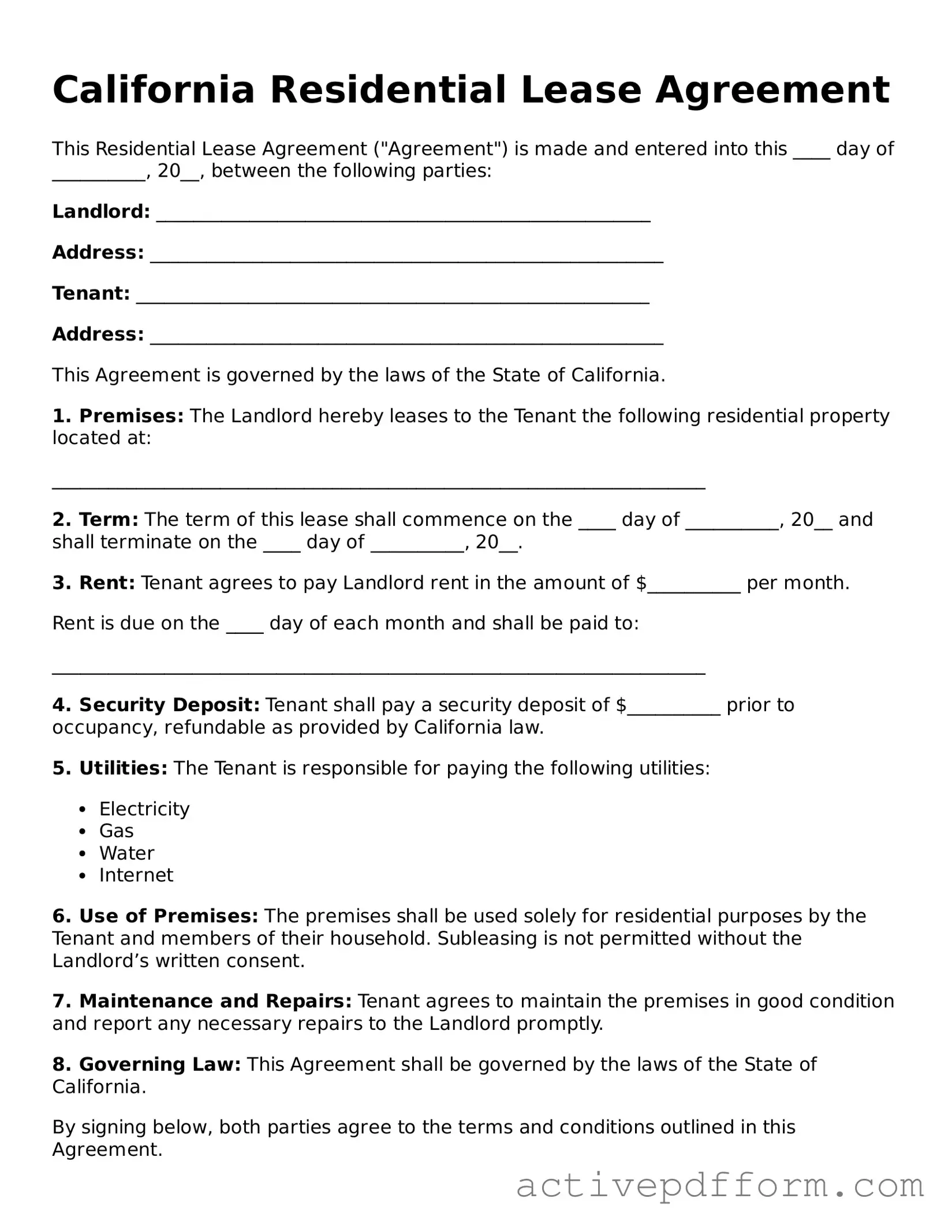California Residential Lease Agreement
This Residential Lease Agreement ("Agreement") is made and entered into this ____ day of __________, 20__, between the following parties:
Landlord: _____________________________________________________
Address: _______________________________________________________
Tenant: _______________________________________________________
Address: _______________________________________________________
This Agreement is governed by the laws of the State of California.
1. Premises: The Landlord hereby leases to the Tenant the following residential property located at:
______________________________________________________________________
2. Term: The term of this lease shall commence on the ____ day of __________, 20__ and shall terminate on the ____ day of __________, 20__.
3. Rent: Tenant agrees to pay Landlord rent in the amount of $__________ per month.
Rent is due on the ____ day of each month and shall be paid to:
______________________________________________________________________
4. Security Deposit: Tenant shall pay a security deposit of $__________ prior to occupancy, refundable as provided by California law.
5. Utilities: The Tenant is responsible for paying the following utilities:
- Electricity
- Gas
- Water
- Internet
6. Use of Premises: The premises shall be used solely for residential purposes by the Tenant and members of their household. Subleasing is not permitted without the Landlord’s written consent.
7. Maintenance and Repairs: Tenant agrees to maintain the premises in good condition and report any necessary repairs to the Landlord promptly.
8. Governing Law: This Agreement shall be governed by the laws of the State of California.
By signing below, both parties agree to the terms and conditions outlined in this Agreement.
Landlord Signature: _________________________ Date: ______________
Tenant Signature: _________________________ Date: ______________
